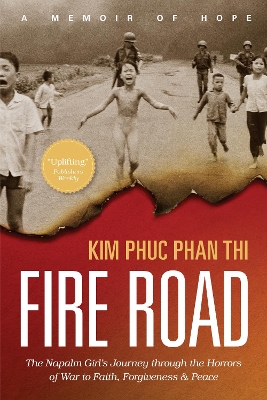
jnkay01
Written on Oct 3, 2017
Phuc’s survival and the errant bombing of civilians in her village outside Saigon by the South Vietnamese military have been comprehensively explored by journalists in the decades since the war, and in Denise Chong’s 1999 book, “The Girl in the Picture,” that detailed the war from the Vietnamese perspective.
“Fire Road,” written with Ashley Wiersma, completes the picture by adding Phuc’s own voice to the story.
The book makes a reader hungry with descriptions of the flavors of her childhood in Southeast Asia: her mother’s noodle soups, the guavas and bananas she plucked ripe off the trees outside her family’s home.
Equally rich are the details of how war appeared to a child: Sandal prints on the ground, where Viet Cong had crossed their property during the night. Bright purple-and-gold smoke that marked bombing targets. The deceptively soft whump-whump sound of napalm canisters hitting the ground.
Napalm sticks to its victims like jelly, burning through layers of skin and muscle. Phuc writes that the Vietnamese government’s use of her story for propaganda stuck as painfully to her, interrupting her studies and threatening to confine her until she defected to Canada.
Still, Phuc doesn’t dwell on the war, its aftermath or her efforts to physically distance herself from her government minders. Her focus in “Fire Road” is her conversion to Christianity, finding a savior with scars she could relate to, and her persistence in persuading her husband and family to join her religious journey.
https://apnews.com/aa37e6b855a44667a6973b1942ad8882
